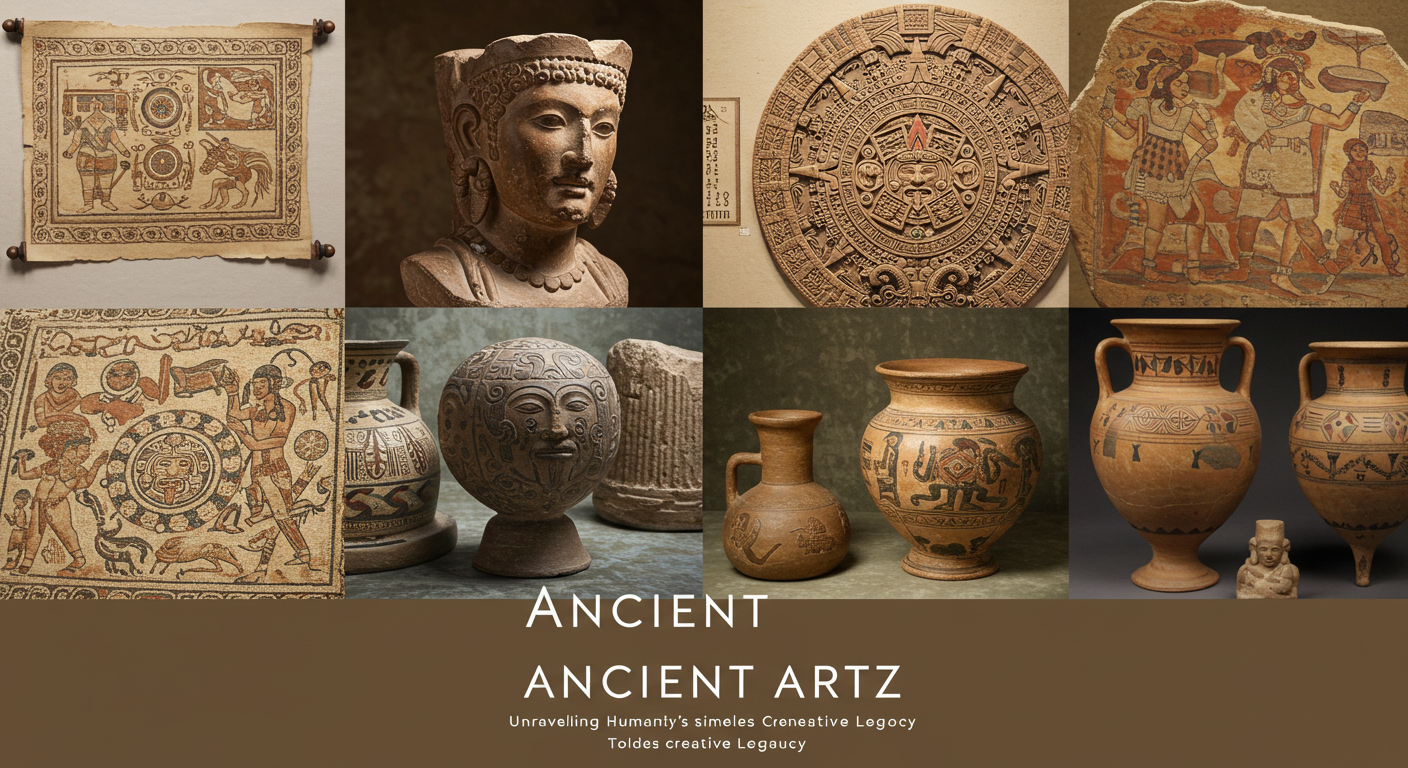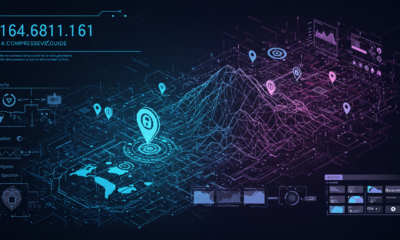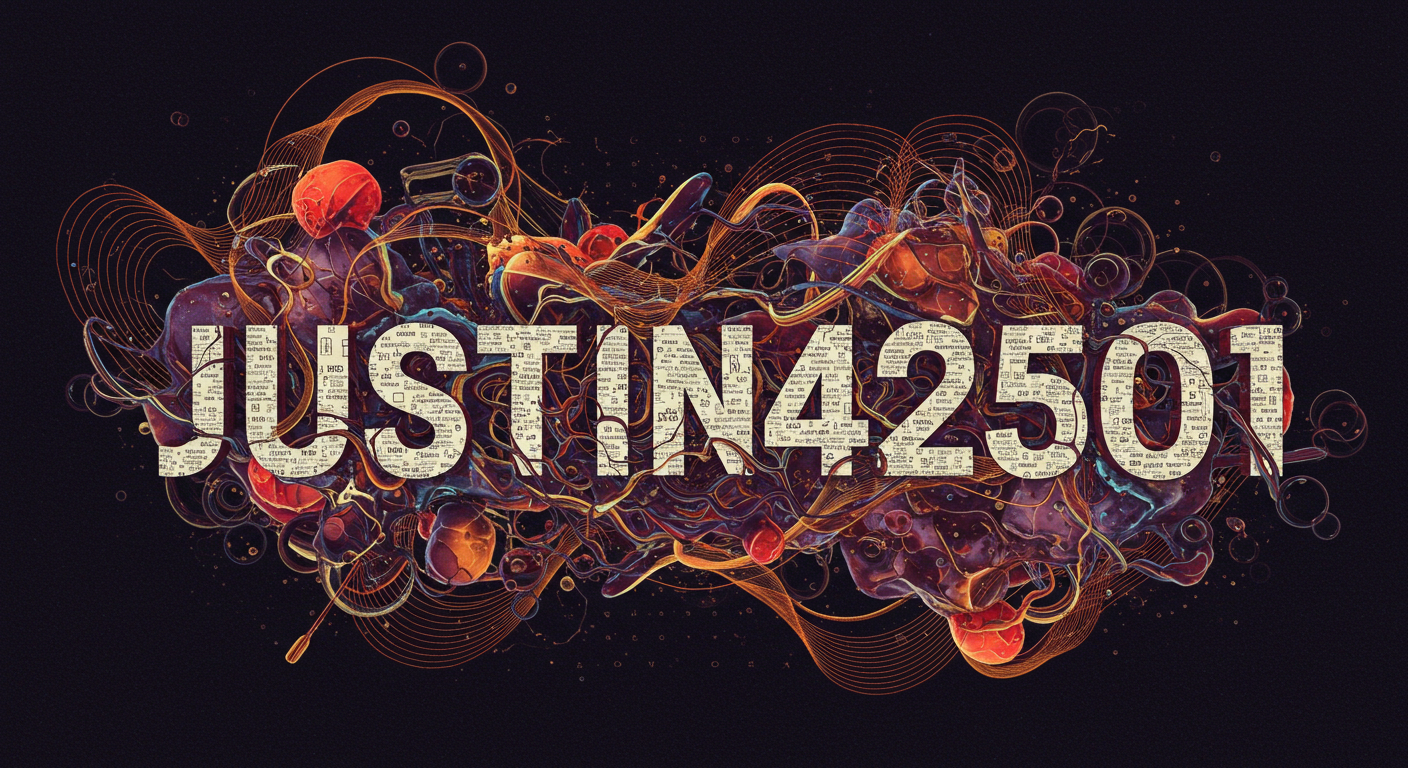Blog
Ancient Artz: Unraveling Humanity’s Timeless Creative Legacy

Long before the rise of digital galleries and contemporary installations, ancient civilizations used art to communicate, worship, and immortalize their stories. Ancient Artz—spanning cave paintings, intricate sculptures, and symbolic pottery—offers a window into humanity’s earliest aspirations and beliefs. This article journeys through time to uncover the techniques, meanings, and hidden gems of ancient artistic expression, revealing how these works still resonate today.
1. The Cradle of Civilization: Artz Across Early Societies
Ancient Artz flourished in diverse corners of the globe, each culture imprinting its unique identity through creativity.
A. Mesopotamia: The Birth of Narrative Art
- Relief Sculptures: The Assyrian Lion Hunt reliefs (645 BCE) depicted royal power and divine favor.
- Cylinder Seals: Intricately carved stones used for storytelling and administrative purposes.
B. Indus Valley: Mysteries in Clay
- Pashupati Seal: A 4,000-year-old artifact depicting a proto-Shiva figure surrounded by animals.
- Terracotta Figurines: Miniature sculptures reflecting daily life and spiritual practices.
C. Mesoamerica: Vibrant Stories in Stone and Pigment
- Mayan Murals: The Bonampak murals (790 CE) reveal courtly rituals and battles in vivid color.
- Olmec Colossal Heads: Enigmatic basalt sculptures representing rulers or deities.
2. Forgotten Masterpieces: Rediscovered Ancient Artz
Recent archaeological breakthroughs have unveiled astonishing works that redefine art history:
- 2023 Indonesian Cave Paintings: Newly discovered 44,000-year-old depictions of mythical creatures in Sulawesi.
- Chavin de Huantar’s Lanzón Stela: A 2,500-year-old Andean sculpture symbolizing spiritual transformation.
- Nok Terracottas: Nigeria’s 2,500-year-old figurines, showcasing advanced iron-age artistry.
3. Techniques and Materials: Ingenuity Before Modern Tools
Ancient artists mastered their environments to create enduring works:
- Egyptian Faience: A glazed ceramic technique used for jewelry and funerary objects.
- Roman Frescoes: Pigments mixed with lime to create vibrant Pompeian wall paintings.
- Incan Ashlar Masonry: Precision-cut stone structures without mortar, like Machu Picchu.
4. Symbolism and Sacred Artz: Bridging Earth and Divinity
Ancient Artz often served spiritual or communal purposes:
- Egyptian Hieroglyphs: Art and language merged in tomb inscriptions to guide the afterlife.
- Buddhist Mandalas: Geometric designs from 4th-century India symbolizing cosmic order.
- Celtic Knotwork: Infinite loops representing interconnectedness and eternity.
5. Preservation Challenges: Saving Ancient Artz for Future Generations
Climate change, looting, and neglect threaten these treasures. Modern efforts include:
- 3D Scanning: Digital recreations of Syria’s Palmyra Arch, destroyed in 2015.
- Nanotechnology: Protective coatings for Mayan murals against humidity and pollutants.
- Community-Led Initiatives: Indigenous groups reclaiming and restoring ancestral art.
6. Ancient Artz in Modern Culture: Echoes of the Past
Today’s artists and designers draw inspiration from antiquity:
- Tattoo Art: Maori Ta Moko patterns and Polynesian tribal designs.
- Fashion: Runway collections featuring Byzantine mosaics or Aztec prints.
- Architecture: Minimalist interiors influenced by Japanese wabi-sabi aesthetics.
Conclusion: Ancient Artz as a Mirror to Modernity
Ancient Artz is more than a relic of the past—it’s a testament to humanity’s unyielding creativity and shared identity. By studying these works, we not only honor our ancestors but also find inspiration to innovate responsibly. From the caves of Sulawesi to the temples of Tenochtitlan, Ancient Artz invites us to reflect on where we’ve been and where we’re headed.
FAQs: Unveiling the Secrets of Ancient Artz
Q: What’s the oldest known piece of Ancient Artz?
A: The Bhimbetka petroglyphs in India, dating back 290,000 years, are among the earliest.
Q: How did ancient artists source their pigments?
A: Egyptians used crushed malachite (green), lapis lazuli (blue), and ochre (red) from desert mines.
Q: Why is much Ancient Artz anonymous?
A: Many cultures prioritized communal or divine recognition over individual fame.
Blog
Sankkucomplex: How is Changing the Way We Experience Spaces

Imagine walking into a space that feels alive, where every corner tells a story and every element is interconnected. This is the essence of Sankkucomplex—a revolutionary approach reshaping how we experience our environments. As urban areas grow denser and lifestyles evolve, traditional architecture struggles to keep pace with the needs of modern society. Enter Sankkucomplex: an innovative concept that melds art, technology, and community to create vibrant spaces tailored for engagement and interaction.
This transformative movement isn’t just about aesthetics; it’s about rethinking functionality in our built environments. In this blog post, we will explore what makes Sankkucomplex so compelling, its myriad benefits, real-world applications through case studies, and its potential future impact on architecture and design. Get ready to rethink everything you thought you knew about spaces!
What is Sankkucomplex?
Sankkucomplex is a revolutionary concept that redefines how we interact with our environments. It combines technology, design, and community to create spaces that are not only functional but also emotionally resonant.
At its core, Sankkucomplex emphasizes fluidity and adaptability. Spaces designed under this philosophy can change according to user needs or environmental conditions. This flexibility enhances the overall experience of any location.
The idea transcends traditional architecture. It’s about creating immersive experiences rather than static structures. The focus shifts from mere aesthetics to enhancing human connections within these spaces.
By integrating smart technologies, such as IoT devices and AI algorithms, Sankkucomplex offers responsive environments that engage users on multiple levels. This innovative approach allows for sustainable practices while fostering creativity and collaboration among individuals who inhabit these dynamic areas.
The Benefits of Sankkucomplex
Sankkucomplex redefines how we interact with our surroundings. It offers a seamless blend of functionality and aesthetics, creating spaces that resonate deeply with users.
One significant benefit is flexibility. These environments can adapt to various needs, accommodating everything from collaborative workspaces to serene retreats.
Another advantage lies in sustainability. Sankkucomplex prioritizes eco-friendly materials and designs, fostering harmony between nature and human activity.
Additionally, it promotes community engagement. Spaces designed within this framework encourage people to connect, share ideas, and collaborate on projects that matter.
The innovative approach also enhances user experience through immersive design elements that stimulate the senses. This leads to increased creativity and productivity in both personal and professional settings.
Embracing the benefits of Sankkucomplex opens up new avenues for living, working, and interacting in more meaningful ways.
The Impact on Traditional Architecture and Design
Sankkucomplex is redefining the landscape of architecture and design. Its influence can be seen in the way spaces are conceptualized and utilized.
Traditional architecture often adheres to rigid forms, focusing on aesthetics and historical significance. However, Sankkucomplex challenges this notion by embracing fluidity and adaptability. Spaces are now designed for interaction rather than mere observation.
This approach encourages architects to think outside conventional boundaries. It invites experimentation with materials, layouts, and functionality. Buildings transform into living entities that respond to their environment.
Furthermore, traditional designs may feel constrained by established practices. The innovative spirit of Sankkucomplex frees designers from these limitations, promoting a more inclusive vision of what space can be.
As a result, we witness an exciting fusion where heritage meets modernity—creating environments that resonate with people’s needs today while respecting historical context. This evolution paves the way for more dynamic architectural narratives in our urban landscapes.
Case Studies: Examples of Successful Sankkucomplex Projects
One standout example of a successful Sankkucomplex project is the EcoHub in Tokyo. This innovative space merges sustainability with urban living, featuring green roofs and energy-efficient designs. The community aspect fosters collaboration among local businesses, artists, and residents.
In Barcelona, the Art District Revitalization showcases another impressive application. Abandoned warehouses were transformed into vibrant studios and galleries. Artists now have a platform to showcase their work while attracting tourists and locals alike.
The Urban Oasis Project in Singapore highlights how Sankkucomplex can create serenity amidst bustling city life. With lush gardens integrated into residential towers, it promotes wellness through nature exposure.
These projects demonstrate how Sankkucomplex redefines spaces by enhancing functionality while fostering community engagement. They serve as benchmarks for what can be achieved when creativity meets practicality in design.
Challenges and Criticisms
Despite its innovative approach, Sankkucomplex faces several challenges. One major concern is the adaptability of traditional structures to fit this new concept. Many architects struggle with integrating modern technology while preserving cultural heritage.
Critics also point out the potential for over-commercialization. As spaces become more experiential, there’s a risk that authenticity may be sacrificed for profit. Visitors might find themselves in environments designed solely for consumption rather than genuine connection.
Sustainability remains another hot topic. Implementing eco-friendly practices within the framework of Sankkucomplex can be complex and costly. The focus on immersive experiences could lead to increased resource consumption if not managed wisely.
There’s a need for public acceptance and understanding. Shifting perceptions about what constitutes valuable space requires time and education, making it essential to engage communities effectively in these transformations.
Future Possibilities and Potential for Growth
The future of Sankkucomplex holds immense promise. As technology continues to evolve, so does the potential for creating innovative spaces that enhance human experience.
Imagine intelligent environments that adapt in real-time to user needs. Integration of AI and IoT could revolutionize how we interact with our surroundings, making spaces more responsive and personalized.
Sankkucomplex also opens doors for sustainability. Using eco-friendly materials and energy-efficient designs can transform urban landscapes into greener havens. This approach not only benefits occupants but also addresses pressing environmental concerns.
Moreover, the concept encourages collaboration across disciplines—architecture, art, psychology—all working together to create immersive experiences.
As communities embrace this vision, we may witness a cultural shift towards valuing shared spaces over traditional segregated ones. The possibilities are as vast as they are exciting, hinting at a vibrant future where space becomes an extension of our identities and aspirations.
Embracing the Innovative Concept of Sankkucomplex
Embracing the innovative concept of Sankkucomplex opens a world rich with possibilities. It encourages us to rethink how we interact with our environments. This approach emphasizes fluidity and adaptability in design, allowing spaces to evolve as needs change.
By integrating technology and sustainable practices, Sankkucomplex redefines functionality. Spaces become not just places to inhabit but immersive experiences that foster creativity and community engagement.
Imagine a workspace that transforms into a social hub after hours or an educational facility that adapts its layout for different learning styles. The versatility inherent in Sankkucomplex can lead to smarter urban planning.
This paradigm shift invites architects, designers, and users alike to collaborate more closely than ever before. As communities embrace this concept, they pave the way for designs that resonate on deeper levels—reflecting cultural identities while promoting inclusivity and innovation in every corner.
Conclusion
Sankkucomplex is redefining our interaction with spaces. As we embrace this innovative concept, the potential for creativity and functionality expands dramatically. From urban landscapes to personal environments, Sankkucomplex promotes a new kind of design that prioritizes human experience.
Through its unique approach, it challenges conventional architecture and encourages us to rethink how we live and work. The case studies showcase successful implementations that inspire further exploration in various sectors.
While there are challenges ahead—such as integrating traditional techniques with modern ideals—the benefits far outweigh the hurdles. This evolving idea invites architects, designers, and everyday individuals to collaborate in creating spaces that resonate on deeper levels.
As interest grows in sustainable practices and adaptable designs, the future of Sankkucomplex looks promising. It paves the way for innovation while enhancing our environments in meaningful ways.
Embracing Sankkucomplex means embracing change—a chance to contribute positively to how we experience our world daily. An exciting journey lies ahead as more people recognize its value in crafting spaces tailored for connection and creativity.
Blog
Wapbald: A Unique Approach to Digital Content Creation

In a world where digital content is king, standing out from the crowd can feel like an uphill battle. Enter Wapbald—a fresh and innovative approach to content creation that aims to revolutionize how we engage with audiences online. Whether you’re a seasoned marketer or just starting your journey in the digital space, Wapbald offers tools and strategies designed to elevate your creative game. With its unique blend of user-friendly features and cutting-edge technology, this platform is quickly gaining traction among content creators everywhere. Let’s explore what makes Wapbald a game-changer in the ever-evolving landscape of digital media.
What Is Wapbald
Wapbald is an innovative digital content creation platform designed to empower creators. It offers a space where ideas can transform into engaging content effortlessly.
At its core, Wapbald combines cutting-edge technology with user-friendly tools. This allows anyone—from seasoned writers to budding creatives—to produce high-quality material without the steep learning curve often associated with traditional platforms.
The interface is intuitive, making navigation simple and enjoyable. Users can focus on their creativity instead of getting bogged down by complex features or technical jargon.
With an emphasis on collaboration, Wapbald also fosters a community atmosphere. Creators can connect, share insights, and collaborate on projects in real-time.
It’s this blend of technology and community that sets Wapbald apart as a go-to destination for all things digital content creation.
The Inspiration Behind Wapbald
Wapbald emerged from a vision to redefine digital content creation. The founders recognized the challenges many creators faced: oversaturation, lack of originality, and the struggle for engagement.
Inspired by diverse backgrounds in technology and storytelling, they aimed to build a platform that nurtures creativity while simplifying processes. This fusion of art and tech became the cornerstone of Wapbald’s philosophy.
The team drew insights from successful content creators who expressed frustration over traditional platforms. They wanted something fresh—an innovative space where ideas could flourish without constraints.
Feedback played a crucial role in shaping Wapbald’s features. Listening to users led to solutions tailored specifically for enhancing creativity and collaboration among writers, designers, and marketers alike.
This commitment to understanding user needs fueled an environment where imagination meets functionality. Thus, Wapbald was born—a platform crafted not just for sharing but also for inspiring genuine connections among creators worldwide.
Key Components of Wapbald
Wapbald thrives on several key components that set it apart in the digital content landscape. First, its intuitive interface makes navigation seamless for users of all skill levels. Even beginners can create captivating content with ease.
Another vital element is Wapbald’s collaborative capabilities. Teams can work together in real-time, making brainstorming sessions and feedback loops efficient and enjoyable.
The platform also emphasizes versatility. From blogs to videos, Wapbald supports various formats tailored to different audience needs.
Moreover, analytics play a crucial role here. Users receive actionable insights about their content performance, helping them refine their strategies continuously.
Community engagement stands out as a core component. Users can share ideas and learn from each other through forums and workshops within the platform. This fosters creativity while enhancing individual skills across the board.
How Wapbald is Different from Other Content Creation Platforms
Wapbald stands apart in the crowded landscape of content creation platforms. Its focus on collaboration fosters a community-driven environment, unlike many traditional tools that prioritize individual work.
The user interface is sleek and intuitive. This allows creators to navigate effortlessly, making it easier for both seasoned professionals and newcomers to jump right in without a steep learning curve.
What truly sets Wapbald apart is its emphasis on multimedia integration. Users can seamlessly blend text, audio, and video into their projects. This versatility encourages more dynamic storytelling methods.
Moreover, Wapbald offers real-time feedback from peers and mentors within the platform. This feature enhances growth by allowing users to refine their skills through constructive criticism.
The flexible pricing model accommodates everyone—from hobbyists to established brands—making top-tier content creation accessible for all types of users.
The Features and Benefits of Wapbald
Wapbald stands out with its intuitive user interface, designed for both beginners and seasoned creators. This simplicity allows users to navigate effortlessly through the platform.
One of the key features is its collaborative tools. Multiple team members can work together in real-time, enhancing productivity while maintaining creative synergy.
Content optimization tools are another significant benefit. Wapbald provides insights that help improve visibility across search engines, ensuring your content reaches a wider audience.
Additionally, the platform offers customizable templates catering to various niches. Users can choose designs that align perfectly with their brand identity without starting from scratch.
Wapbald’s analytics dashboard empowers creators by providing data-driven insights into engagement metrics and audience behavior. This enables informed decisions for future projects and strategies.
Success Stories from Wapbald Users
Wapbald has transformed the content creation landscape for many users. Take Sarah, a small business owner who struggled to reach her target audience. Through Wapbald’s innovative tools, she crafted compelling articles that resonated with her customers, boosting engagement and sales.
Then there’s David, a freelance writer who found his niche through Wapbald’s platform. With its unique features, he connected with clients looking for high-quality content in specialized fields. His portfolio flourished as he gained recognition for his work.
Another inspiring story comes from Emma, an educator using Wapbald to create interactive learning materials. Her students are more engaged than ever before thanks to the dynamic content she produces effortlessly.
These stories reflect just a fraction of what Wapbald users experience daily—a community empowered by creativity and innovation in digital storytelling.
Tips for Creating Engaging and High-Quality Content on Wapbald
Crafting engaging content on Wapbald starts with understanding your audience. Research their interests and preferences to tailor your message effectively.
Use a conversational tone. This helps in building rapport and keeping readers invested in what you’re saying. Simple language often resonates more than complex jargon.
Incorporate visuals where possible. High-quality images or videos can enhance understanding and retain attention, making your content visually appealing.
Structure is key. Break up text into short paragraphs, bullet points, or lists for easier digestion of information.
Always include calls-to-action (CTAs). Encourage interaction by inviting readers to comment or share their thoughts at the end of each piece.
Don’t forget to optimize for SEO while maintaining natural flow. Use relevant keywords without overstuffing them, ensuring that both search engines and users find value in your writing.
Future Plans for Wapbald and its Impact on the Digital Content Industry
Wapbald is poised to redefine the landscape of digital content creation. With plans to integrate advanced AI-driven tools, it aims to assist creators in producing tailored content that resonates with their target audience.
The introduction of collaborative features will foster community engagement, allowing users to co-create and refine ideas seamlessly. This approach not only enhances creativity but also builds a supportive network among creators.
Moreover, Wapbald envisions partnerships with educational institutions. By providing resources and training, aspiring writers can learn the intricacies of effective storytelling and digital marketing.
As these initiatives unfold, Wapbald’s influence on the industry will likely inspire a new generation of content creators. The emphasis on quality over quantity is set to elevate standards across platforms.
Conclusion
Wapbald is redefining the landscape of digital content creation. Its unique approach combines creativity with technology, making it easier for users to produce high-quality material. The platform’s inspiration stems from a need for more dynamic and engaging ways to connect with audiences.
Key components such as user-friendly features and innovative tools set Wapbald apart from traditional content creation methods. Users benefit from its robust capabilities that streamline the process while enhancing their creative output.
Success stories abound, highlighting how individuals and businesses have leveraged Wapbald to elevate their brand presence online. By embracing the tips provided, creators can maximize their impact on this versatile platform.
Looking ahead, Wapbald plans to expand its offerings further, promising even more exciting developments in the realm of digital content creation. As it continues to evolve, Wapbald stands poised to make significant strides within the industry.
The future appears bright for those who embrace what Wapbald has to offer in transforming ideas into captivating content experiences.
Blog
“Switching 2nd” – A Comprehensive Guide to Switching 2nd Techniques
-

 Business8 months ago
Business8 months agoUnderstanding the Significance of License Plate 鲁Q 669FD
-

 Technology8 months ago
Technology8 months agoIs 8884216488 a Scam? Debunking Common Myths
-

 Technology8 months ago
Technology8 months ago164.68111.161: A Comprehensive Guide
-

 Digital Marketing8 months ago
Digital Marketing8 months agoWepbound: The Future of Digital Connectivity
-

 Entertainment8 months ago
Entertainment8 months agoStreameast: The Best Free Live Sports Streaming Platform in 2025
-

 Crypto8 months ago
Crypto8 months agoCrypto30x.com GG: Is It the Future of Crypto Investment?
-

 Technology8 months ago
Technology8 months agoJustin42501: Redefining The Future Of Digital Connection and Growth
-

 Crypto8 months ago
Crypto8 months agoCrypto30x.com AC Milan: A New Era for Fans Through Digital Currency
-

 Blog4 months ago
Blog4 months agoهنتاوي com: A Unique Anime Universe Awaits!
-

 Health & Fitness8 months ago
Health & Fitness8 months agoProstavive Colibrim: Discover the Benefits of Prostate Health

